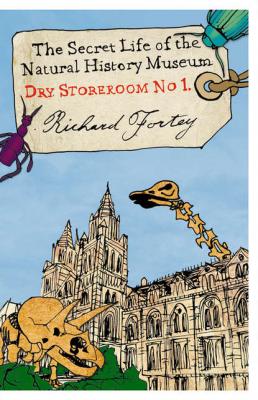Dry Store Room No. 1: The Secret Life of the Natural History Museum. Richard Fortey
Читать онлайн.| Название | Dry Store Room No. 1: The Secret Life of the Natural History Museum |
|---|---|
| Автор произведения | Richard Fortey |
| Жанр | Прочая образовательная литература |
| Серия | |
| Издательство | Прочая образовательная литература |
| Год выпуска | 0 |
| isbn | 9780007362950 |
RICHARD FORTEY
Dry Store Room No. 1
The Secret Life of
the Natural History Museum
To Leo, with my love
CONTENTS
Dedication
I am indebted to many friends and colleagues in the Natural History Museum for sharing their oral histories with me, often in return for no more than a good lunch. Any errors that appear in this book are entirely the fault of the author, who may have not been the best of scribes, and nothing to do with those at lunch. I apologize to those who gave me stories that I failed to use: there was no shortage of material. I apologize even more sincerely to those who still have not received their lunch. I should particularly mention the following (in no particular order): Edmund Launert, Sandra Knapp, Peter Hammond, Dick Vane-Wright, Victor Eastop, Martin Hall, Steve Brooks, Andrew Polaszek, Paul Eggleton, David Reid, John Taylor, David Johnson, Vaughan Southgate, Amoret Whitaker, Jenny Bryant, Linda Irvine, Bob Press, Robert Symes, Richard Her-rington, Alan Hart, Paul Taylor, Hugh Owen, Ellis Owen, Angela Milner, Cyril Walker, Ollie Crimmen, Ron Croucher, Chris Stringer, Andrew Currant, Alex Ball, Sara Russell, Frances Wall, Chris Stanley, Bob Hutchison, Rowland Whitehead, Klaus Sattler, Kathy Way and Lorraine Cornish. Polly Tucker helped greatly with making Museum archives available to me. Thanks also to Katie Anderson in the Natural History Museum Picture Libary. Heather Godwin gave her usual eagled-eyed attention to the first draft, and removed several bad jokes. Robin Cocks read through the manuscript. Jackie Fortey gave indispensable help with picture research. Annabel Wright and Gail Lynch at HarperCollins were charming and patient editors, and Vera Brice was a fantastic designer.
This book is my own store room, a personal archive, designed to explain what goes on behind the polished doors in the Natural History Museum. All our lives are collections curated through memory. We pick up recollections and facts and store them, often half forgotten, or tucked away on shelves buried deep in the psyche. Not everything is as blameless as we might like. But the sum total of that deep archive is what makes us who we are. I cannot escape the fact that working for a whole lifetime within the extravagant building in South Kensington has moulded much of my character. By the same token, I also know the place rather better than any outsider. I am in a position to write a natural history of the Natural History Museum, to elucidate its human fauna and explain its ethology. There are histories that deal with the decisions of the mighty, and there are histories that are concerned with the ways of ordinary people. An admirable history of the Natural History Museum as an institution, by William T. Stearn, was published in 1981. What Stearn largely left out was an account of the achievements, hopes and frustrations, virtues and failings of the scientists who occupied the ‘shop floor’ – the social history, if you like. My own Dry Store Room No. 1 will curate some of the stories of the people who go to make up a unique place. I believe profoundly in the importance of museums; I would go as far as to say that you can judge a society by the quality of its museums. But they do not exist as collections alone. In the long term, the lustre of a museum does not depend only on the artefacts or objects it contains – the people who work out of sight are what keeps a museum alive by contributing research to make the collections active, or by applying learning and scholarship to reveal more than was known before about the stored objects. I want to bring those invisible people into the sunlight.
